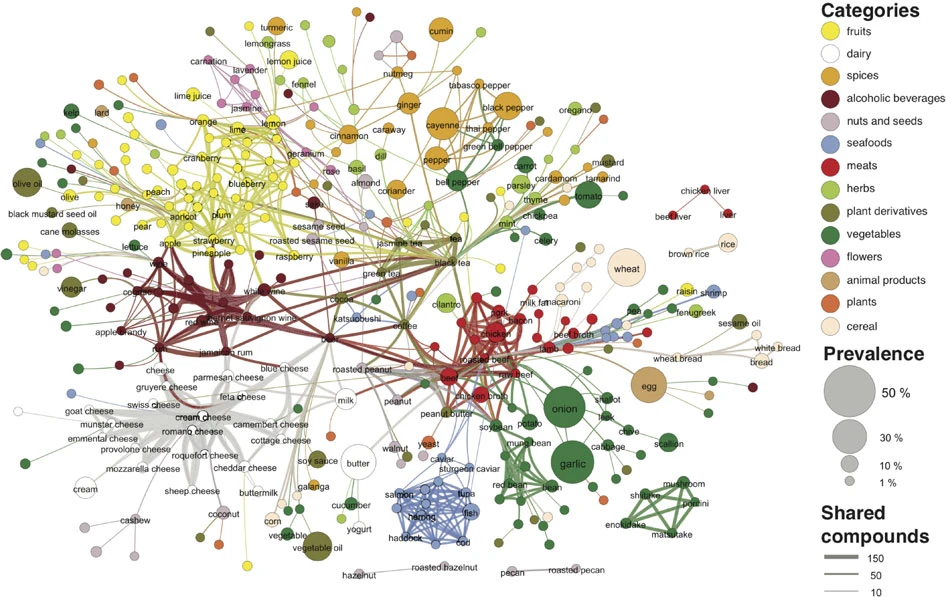Flavor network and the principles of food pairing
In the online and open access Scientific Reports of Nature, a fascinating paper on “Flavor network and the principles of food pairing” by Yong-Yeol Ahn, Sebastian E. Ahnert, James P. Bagrow and & Albert-László Barabási.
The backbone of the flavor network. Each node denotes an ingredient, the node color indicates food category, and node size reflects the ingredient prevalence in recipes. Two ingredients are connected if they share a significant number of flavor compounds, link thickness representing the number of shared compounds between the two ingredients.
“The cultural diversity of culinary practice, as illustrated by the variety of regional cuisines, raises the question of whether there are any general patterns that determine the ingredient combinations used in food today or principles that transcend individual tastes and recipes. We introduce a flavor network that captures the flavor compounds shared by culinary ingredients. Western cuisines show a tendency to use ingredient pairs that share many flavor compounds, supporting the so-called food pairing hypothesis. By contrast, East Asian cuisines tend to avoid compound sharing ingredients. Given the increasing availability of information on food preparation, our data-driven investigation opens new avenues towards a systematic understanding of culinary practice.”
More here



Comments Disabled